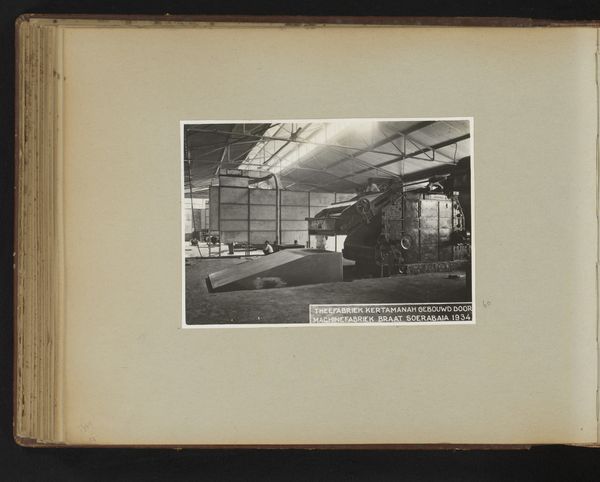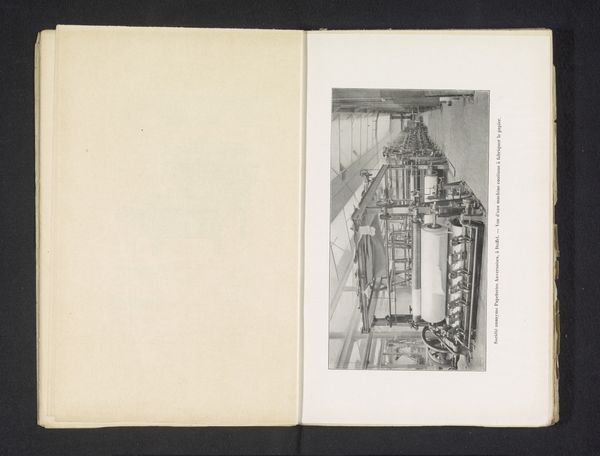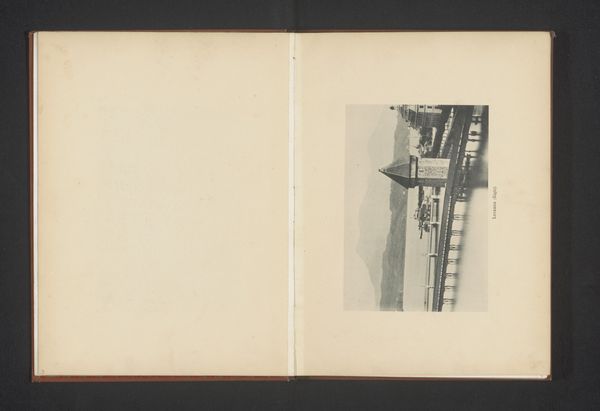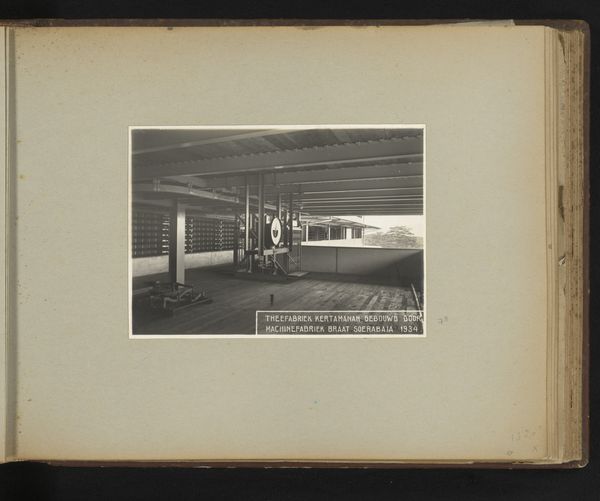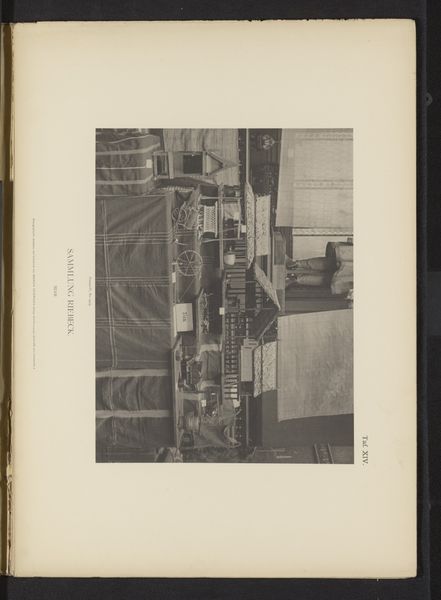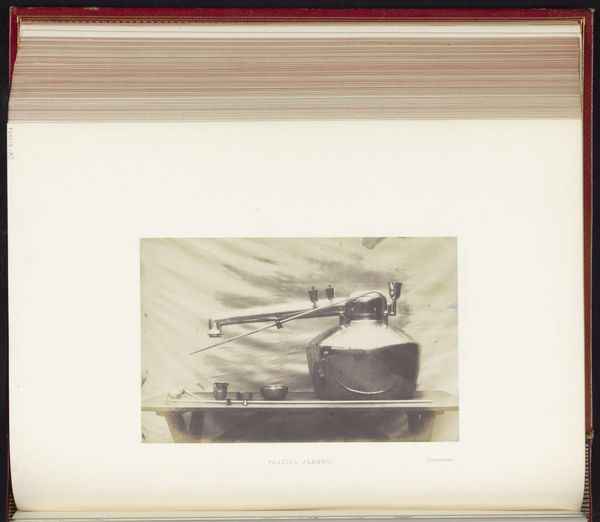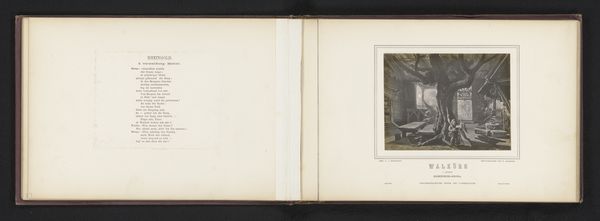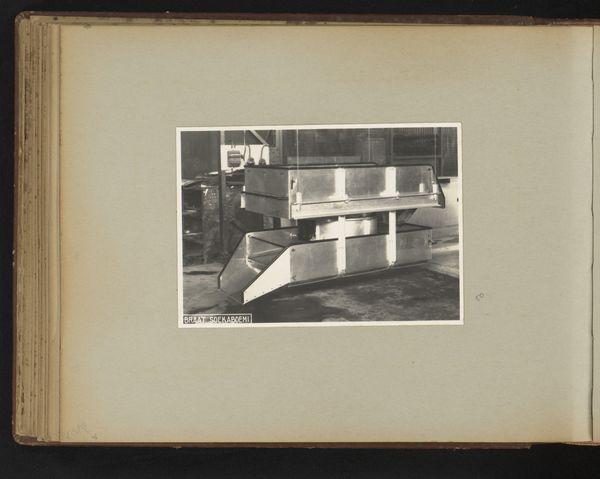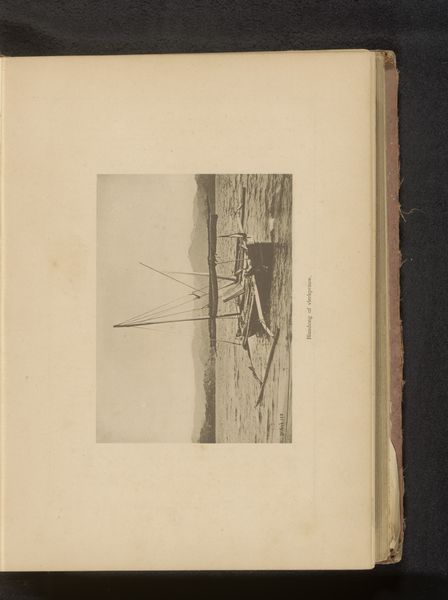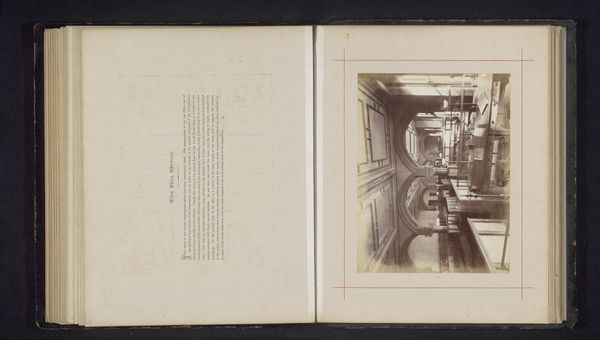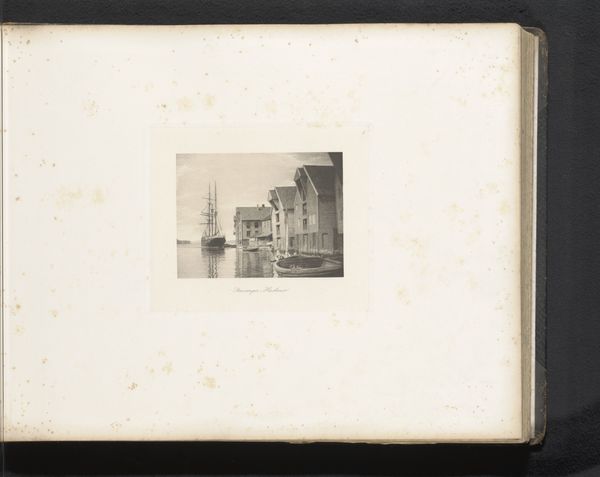
photography
#
still-life-photography
#
sculpture
#
photography
#
geometric
Dimensions: height 118 mm, width 175 mm, height 250 mm, width 320 mm
Copyright: Rijks Museum: Open Domain
Curator: Here we have an image of a 'Proef-fermenteermachine' or 'Test Fermentation Machine,' possibly dating back to 1936. It's currently housed in the Rijksmuseum. Editor: My immediate thought? The sheer scale is striking! And that metallic, industrial aesthetic… almost foreboding, but with an element of absurd geometric play. Curator: It's quite interesting when we consider that it is captured in photographic medium, placing this industrial equipment within the discourse of fine art. We might also see how its functional intent—fermentation—ties to processes of transformation. Editor: Absolutely. We see form follows function here, right? What materials make up this fermentation machine, and what processes made it to that stage? The pipeline is the core component and a central symbol for me. The creation processes, what labor went into constructing and using something like this in a specific social and political moment? Curator: This work intersects with several crucial sociopolitical aspects that deal with technological advancement. These advances can promise liberation from strenuous or gendered labor. But does this ultimately dismantle the systemic biases inherent in the industrial structure, and who actually profits? I think such considerations can influence how we understand the art as part of this story. Editor: Indeed, thinking about the machine’s purpose raises all sorts of questions around technology and industry as extensions of the human body. What's produced? How is it consumed? The "machine" has always been, as many scholars have described, an emblem of human potential and alienation. Curator: Considering that these advances come hand in hand with complex ethical dilemmas about sustainability, exploitation of labor, and access to resources in the art’s creation and purpose might inform our viewing. So many implications spring from such seemingly innocuous images. Editor: Exactly! Reflecting on materiality, industrial manufacturing and art challenges traditional separations between art, craft, and even our relationship to consumerism. Curator: I think investigating the philosophical and socioeconomic context helps provide an image a great deal of nuance and meaning. Editor: And for me, zooming in on material, on the physical reality and how it manifests that larger social picture is everything.
Comments
No comments
Be the first to comment and join the conversation on the ultimate creative platform.
